Pets
Pet Supplies Plus Vet Clinic Provides Comprehensive Services
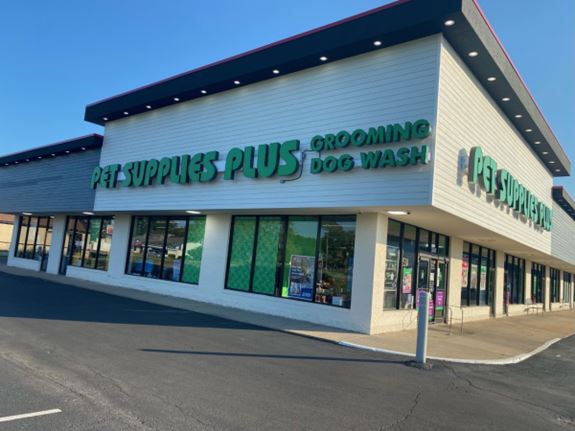
In order to better serve its customers, Pet Supplies Plus Vet Clinic has developed a veterinary facility within Pet Supplies Plus. Wellness and preventative care are provided through the VIP Pet Care program, which is a cost-effective, reliable and high-quality option for pet owners.
Franchised pet business Pet Supplies Plus Vet Clinic caters to canine and feline owners in addition to those who keep small animals such rabbits and mice, reptiles, birds and fish in aviaries. There are several Pet Supplies Plus locations throughout North America, including as Maine, Pennsylvania, Michigan, Ohio, Illinois, Iowa, Kansas Texas and Florida. The local community and the management style of each shop contribute to their unique reputations.
Reviews of Pet Supplies Plus Vet Clinic locations and experiences with customer service are always favorable. There are some complaints, as with any business, and they tend to focus on the quality of the grooming services and the friendliness of the younger members of the team. Pet Supplies Plus is rated somewhat higher than Pet smart based on feedback from actual customers.
Pet Supplies Plus Vet Clinic plus received generally positive feedback from customers, who praised the store’s wide variety of offerings and helpful staff. Several customers have voiced their displeasure with the service they received and it seems that this is more prevalent in establishments where the majority of employees are inexperienced young people.
Pet Supplies Coupons
You can now save money and shop more responsibly with the most recent Pet Supplies Plus Coupon codes that we have posted. Shoppers may now save a ton of money at the most well-liked Fashion and Clothing business with next to no work required on their part. People keep coming back to our discount site every day because of the wide variety of buy one get one free and other deals we provide. The best offers available at this online business have been featured here throughout the year. You can count on us to help you save costs significantly. You can refer to Pet Supplies Plus $10 Off Coupon 2023 & 15% OFF $60 to save money more.
Pets plus Locations and Times
Customers may easily fit their pet supply shopping around their work schedules, thanks to Pet Supplies Plus Vet Clinic extended store hours. The following holidays will result in Pet Supplies Plus being closed. Sunday after Easter we give thanks Holiday Season Changes to regular business hours may occur on the following holidays tonight is Christmas Eve, Christmas Eve and The First Day of the New Year.
Provide the Standard Treatment
At Pet Supplies Plus Vet Clinic you may choose between two different grooming services. Expert groomers may provide the standard treatment, or pet owners can utilize an in-store grooming station to give their animal a bath on their own. The final cost will depend on the kind of service you choose, the size of your dog, and any optional extras. A standard bath involves a wash with shampoo, ear cleansing, nail clipping and blow-dry. A haircut and a shower may be done at the same appointment.
Provide Premium Pet Services Require
As the third biggest pet specialty shop in the United States, Pet Supplies Plus Vet Clinic provides comprehensive services for your pet. They provide everything your pet may possibly require, as well as a staff that knows everything about animals to make sure that you don’t have to go anywhere else.
The Firm Has wide Locations
In addition to its headquarters in Michigan, the firm also has locations in Ohio, Illinois, Pennsylvania, Indiana, New York, New Jersey, Connecticut, Massachusetts, California, Maryland and Rhode Island for a total of approximately 560 shops in 36 states. The stores range in size from 8,000 to 12,000 square feet and may be found in close proximity to other pet supply retailers.
Priced Competitive and Represent Good Value
Pricing for small breeds ranges from $25 to $35, depending on whether or not the procedure includes a haircut. Prices range from $30 to $50 for a medium-sized breed, $60 to $80 for a big, and $100 or more for a monster. Prices at Pet Supplies Plus Vet Clinic are less than those of its rivals. Although the company’s offerings are not inexpensive, they are price competitively and represent good value. The firm maintains a website which is a comprehensive resource for learning more about the business and the items it sells.
Provide a Large Variety of Items
Whether or whether customers feel like they are receiving a good bargain is more important to them than the actual price. The most effective strategy for doing so is to provide a large variety of items at competitive rates, make it simple for customers to compare those products, and provide helpful customer service. Medical facility for animals Simple procedures to complete. But you may still run a successful veterinary practice as the owner or manager without any formal training in the field.
Insurance and Veterinary Care
If an animal suffers harm or death due to a professional’s carelessness, the victim’s family may file a malpractice complaint in most US jurisdictions. In most cases, the fine will not exceed the worth of the animal. That’s why vets can get malpractice insurance for little under $500 year, whereas human doctors pay closer to $15,000 annually. Veterinary malpractice insurance and veterinary care costs may go up because some states include punitive damages, loss of companionship and suffering as part of the judgment.
Relevant Considerations
Opening a Pet Supplies Plus Vet Clinic requires careful consideration of several factors. If you’re determine on the concept, whether you’ll be working out of your house or a rented space, take the time to plan well so that your practice grows. A good example is the impending opening of The Southwest Veterinary Clinic in Richmond’s southwest. Every conceivable medical treatment for pets will be available at this facility.
Success in the Pet Industry
There are 15,890 pet and supply businesses in the United States, with 7,945 of them being single proprietorships. The profits from a pet shop may be substantial. The average weekly sales per employee in the retail pet-products industry is $2,600, or $135,200 year, as reported by the American Pet Supplies Plus Vet Clinic Products Manufacturers Association. Get money off with $10 Petco Coupon, Petco Grooming Coupon 20% Off and other Petco promo codes this month. Access today top’s deals and save instantly
Expert Advice
Tips for bringing a puppy home
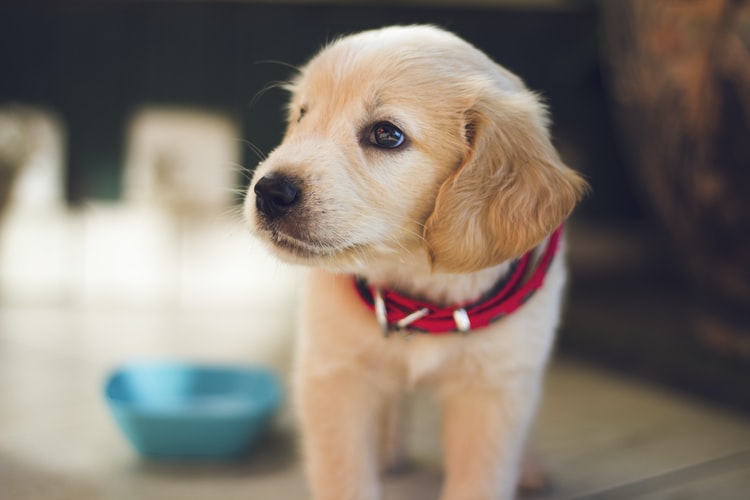
bringing a puppy home is a very beautiful and wonderful experience.
However, many families forget to take into account how difficult it can be, especially in the first days after they arrive home.
Receiving a puppy at home is a great joy for the whole family, but it is important that the puppy feels good, comfortable and that all its basic needs can be met.
What should be bought before bringing a puppy home?
- Dog houses:
Although it is a puppy, it is important that it has its own space inside the house.
Therefore, it will be important to have a dog house, where the dog can feel safe and sleep peacefully. Finding dog houses at a good price is not difficult, but it is very necessary.
Why a house? Because the puppy will feel more protected and secure than on a blanket. A house, for a puppy, is a perfect den. Check out https://murshidalam.com/tips-for-choosing-a-suitable-bed-for-your-dog/
- Feeder and drinker:
A puppy also needs its own space to eat and drink.
It is recommended to purchase the trough and trough made of a resistant material, as well as stainless steel.
In addition, it will be very easy to clean them to maintain proper hygiene after each meal.
Another recommendation is that they be ceramic with a heavy base to prevent them from turning it over.
Puppies are very playful, and if you don’t buy them from a sturdy material, they will become your toys.
- Your own toys and something to chew on:
A puppy enjoys playing, running, and chewing very much, so they need to have their own toys for fun.
In this way, you avoid taking objects such as socks or shoes for this purpose.
Puppies, while their teeth are coming out, will want to chew everything.
The adopter must ensure that the puppy not only has his toys, but something to chew on.
It is important that they are not toxic, that they are not so hard or small and that they can be used for a long time.
- Products for the general hygiene of the puppy:
Puppies should be bathed from three months of age, but regardless of the puppy’s age, having all the products that will be needed for hygiene is important.
It is necessary to have: comb or brush according to your skin and coat type, nail clippers, nail scissors and, of course, a dog shampoo.
- Puppy food:
When a puppy comes to his new home, everything is new for him, it is a total change.
Something important that should be taken into account is that, at first, the dog eats in the same feeder that he has been eating before his arrival home, so he will feel more comfortable and calm.
Also give him the same food.
As the days go by, the changes of the new feeder and the new food can be made.
The puppy may put up a bit of resistance at first, especially to the new food.
For this, a recommendation is to go little by little mixing the usual food with the new one, until leaving only the new one.
Note : Puppies, from eight weeks of age, can start to eat solid food but, little by little, so as not to affect their digestive system.
- Collar and leash:
In order to go for a walk with the puppy, it is necessary to have its collar and leash, but you already know that you must be very careful if it does not have all the vaccines.
Having the collar and leash, even if it has not yet been vaccinated, will gradually get the dog used to its use.
It is a perfect time to familiarize your dog with wearing a collar and walking on a leash, practicing indoors and outdoors, while socializing with other healthy puppies or dogs.
Many doubts of adopters is knowing which necklace to buy. Adjustable or soft nylon collars are recommended, because they grow with the puppy, are comfortable and safe.
The collar should not be too tight. If the collar is put on at the time of the walk, it will be easy to see if it needs to be adjusted better or not, but if the dog is wearing it at all times, it is necessary to check it frequently. Puppies grow super fast.
Note : Even if the puppy does not have his vaccinations yet, it is recommended to go out with him in your arms from time to time, so that he gets used to different smells, noises, people and other animals.
- Your own bed:
The puppy will also need a bed. It must be a comfortable bed and according to the size of the dog.
The best? A padded home / den where you feel safe and secure.
If it is a large breed dog, the adopter may be tempted to purchase a large bed to keep for many years, but the puppy may feel unprotected.
A puppy needs a warm and cozy space, where he feels safe.
The puppy has come home, what to do?
Once you have everything you need, it is time to welcome the puppy into the house, but what to do at that time?
- Let it sniff
When the dog arrives at the new house, the most normal thing is that it arrives sniffing everything that surrounds it.
The adopter should allow him to sniff as much as he wants, but under supervision.
You could get into a small place or get close to something that could hurt you and that is why it is important to be aware and not leave you alone in your exploration.
- Socializing with other dogs and people
When the dog has all his vaccinations, it will be time to go outside without having to see who he socializes with.
If there is another dog at home, it is important that they get to know each other from the first moment the new one arrives, always under supervision and little by little, without forcing the approach.
- Give you your own space
When the puppy arrives, he should already have his own bed, but also the place where the bed will be and also the place to eat.
In the same way, it is advisable to have their toys in that same space, so that the puppy associates it with something pleasant and also fun.
The puppy, most likely, is that he has been with his mother until the moment of reaching the arms of his adopter, so, even if he has his own happy, happy and calm space, it can be difficult for him to adapt.
For this reason, the adopter must have patience and a lot of love.
The puppy must be comfortable and that is achieved by being a little next to him at bedtime, while he gets used to it.
Also have a comfortable and warm blanket.
Note : It is important not to overload him with caresses that, instead of helping him adjust, could make him feel overwhelmed.
The puppy will come closer whenever he wants.
- Space for your needs
As we have mentioned, the puppy cannot go out without its vaccines, so it will need to have a space to be able to relieve itself. Undoubtedly, that space must be cleaned every day.
However, it is not enough to have the place, but to teach him to use it.
To help you in learning, it is recommended that when you relieve yourself, with a newspaper, transfer what you do to the site that was implemented for that purpose.
So the dog can sniff and associate.
It is necessary to clean the place very well so that the dog does not do it there again. If its smell is not removed well, it will return.
- Care and attention
Being a puppy, he may feel scared or lonely, if so, the adopter should be there to give him attention.
In this way, little by little the affective bond between the two is created.
After he adapts, the adopter can teach him the rules of coexistence, but at first, they need attention and avoid bad times or experiences; for a quick and happy adaptation.
Basic and important care with a puppy at home
Puppies do not know the dangers, while it adapts to its new home, learns, and grows a little more, the adopter should not leave it alone and take good care of it.
- Avoid leaving cables within reach.
- Move glass objects away where the puppy is used to playing or jumping.
- Do not leave dangerous objects such as needles or scissors in a place that the dog can reach.
- Place household cleaning products in a high and remote place.
- Keep small objects away.
- If there are stairs in your new home, take the precaution of placing a protection while the dog grows and learns to go up and down safely.
Other important cares are:
- Visit to the vet:
The visit with the doctor, not only to take care of your health in general, but to schedule your vaccination.
It is also important to manage the treatment for internal and external parasites, when the veterinarian indicates it.
- Place the chip:
All dogs must carry a chip with all their identification.
This is done with the vet, after the rabies vaccination.
Chip placement is super fast and the dog does not feel any pain.
It is certainly important, in case the dog gets lost. The chip is placed from two months of age.
Pets
How to Help a Dog with Anxiety
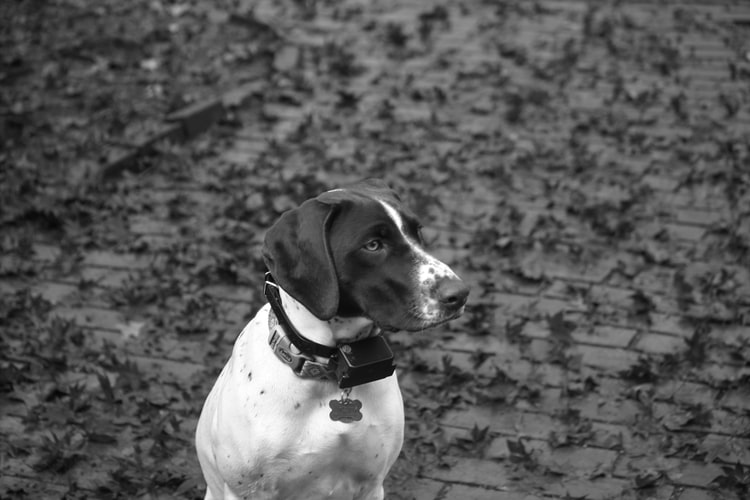
Do you have an anxious best friend? Does your buddy bark, whine and panic? You’re not alone! Many dogs experience anxiety, it’s frightening for your dog and can be a worrying time for you. However, we’re about to show you how to calm your dog down, and help your best friend lead a stress free life.
That being said, feeling anxious is a normal and often healthy emotion. If your dog’s anxiety level is too high and left unchecked, it could turn into an anxiety disorder. Such a condition can lead to behavioral issues as well as other problems. Thankfully, you can train your dog to calm down quickly.
What Causes Canine Anxiety?
Many things can cause dog anxiety, but the most common causes seem to be fear, separation and ageing. Keep these things in mind when caring for your anxious dog.
Fear
Things that can cause fear in your dog are loud noises, strange people or animals, visual stimuli such as hats or umbrellas, new or unfamiliar environments as well as specific situations. These situations can include the vet’s office or car rides or even surfaces like grass or wood floors. Some dogs may only have quick reactions to these things, but they can cause real turmoil for more frequently anxious dogs.
Separation
Separation anxiety is estimated to affect around 14% of dogs. Dogs with this condition cannot find comfort when they are left alone or separated from their family. This anxiety often comes out in undesirable behaviors. These negative characteristics include urination and defecation in the home and destroying furniture and furnishings. It may also manifest in barking and whining.
Ageing
This affects older dogs and can be associated with cognitive dysfunction syndrome or CDS. CDS affects memory, learning, perception and awareness. In this way, it is similar to Alzheimer’s disease in humans. This leads to both confusion and anxiety in older dogs.
What Symptoms Should You Look For?
So how can you tell if your dog has anxiety? There are several things you will need to look out for.
- Aggression
- Accidents in the house
- Drooling
- Panting
- Destructive behaviors
- Excessive barking
- Pacing
- Restlessness
- Repetitive or compulsive behaviors
Some of these symptoms may be the result of a rare anxiety-inducing event. Any of these behaviors can become recurrent and result in more serious concerns. By far, the most dangerous symptom is aggression.
It can be targeted directly or indirectly in any given situation. Direct aggression is when your best friend lashes out towards people or other animals. Indirect aggression often occurs when a person comes between the dog and the perpetrator of the aggression, like another animal. The first signs of this are growling and barking.
Accidents in the house are pertaining to urination and defecation. It is a prevalent symptom of separation anxiety, and anxious dogs often get themselves so worked up that they have an accident. This can be frustrating for owners who have worked challengingly housebreaking their beloved companion. It is unpleasant to clean and can lead to things like property damage.
Like accidents, destruction is also widespread with separation anxiety. The damage is most often found near the entryway/exit points like doorways and windows. Dogs in such a state of heightened anxiety are also at risk to themselves. Your best friend may attempt to break out of his crate, windows, or even doors, resulting in severe and painful injuries requiring an expensive vet visit.
How Can You Help?
There are two main things you can do to help your anxious dog. These are prevention first, and if all else fails, treatment. It can be hard to precisely predict what makes your dog nervous and even harder to tell if it will become a severe condition. First, we will discuss prevention and then treatment.
Prevention
You can do things to help train your puppy or adult dog to help with their anxiety early on. These suggestions may solve the problem before it becomes a serious concern. However, if they don’t work or the stress gets worse, it may be time to discuss treatment with your veterinarian.
Body Language
One of the best things you can do to help your dog is reading their body language. Get to know when your pet is uncomfortable or scared. Learning these things can help you avoid negative experiences or use them as a teaching moment. Knowing your dog’s body language will also tell you when they are just beginning to get anxious. This is especially useful when it comes to dogs with aggression-related anxiety.
Socialization
Proper socialization can help prevent anxiety in dogs. Introducing your dog to new people, dogs, animals, places, and experiences early on can help avoid an anxiety response later on. It also helps your best friend become well-adjusted.
Obedience
Obedience training is an essential tool for helping your dog with their anxiety. It helps establish a healthy relationship and establishes trust between the two of you. A well-trained dog is easier to socialize with. We recommend obedience classes as they are an excellent place for dogs to meet other dogs in a safe environment.
Exercise and Nutrition
Regular exercise and stimulation are vital to your best friend’s development, physical and mental health. A well-stimulated companion is less likely to be destructive. Nutrition is equally important to your canine’s health. Making sure your pet is healthy will also help make them happy and can help reduce their stress.
Situation Avoidance
You can also avoid or prevent events that cause your dog’s anxiety, especially if they have been diagnosed with an anxiety disorder. It doesn’t mean you need to put your life on hold, but it can help reduce some of your pet and your’s stress. If you can’t avoid the sources of your dog’s anxiety, then it is best to take preventative measures such as leashes, harnesses and, if needed, basket muzzles. Know your best friend’s triggers. You can prepare for these situations in advance.
Treatment
If treatment is needed, then it is best to talk to your veterinarian. They will be able to help identify exactly what is causing your best friend to be anxious. They will also be able to discern if your buddy’s anxiety is situational or a more severe issue. If the concern is extreme, medication may be necessary. Always talk to your vet before giving any kind of medicine to your pet.
Training and Conditioning
You can use training and conditioning to help your anxious best friend. The purpose of this is to curb your pet’s response by replacing the anxious or aggressive behavior with something more desirable, such as sitting or paying attention to their owner.
You can also try exposure therapy as a form of training with your canine. This is the process of slowly introducing your dog to what is causing their anxiety. Do this in short periods at a decreased intensity. Reward your bud for positive behavior and repeated exposure. Through these methods, your dog’s fear may lessen.
Anxiety Meds for Dogs
If your friend is struggling, your vet may recommend medications such as an SSRI or antidepressant. For more predictable events, they may recommend a benzodiazepine and an antidepressant to help your dog in particular times of stress.
In Conclusion:
Anxiety for your best friend may be more stressful than you think. It can come on suddenly and in various ways and even turn into a more severe condition. However, with the proper training, techniques and possibly meds, your best friend can get back to being their happy and calmer selves.
Healthy Pets
How often do you walk your dog
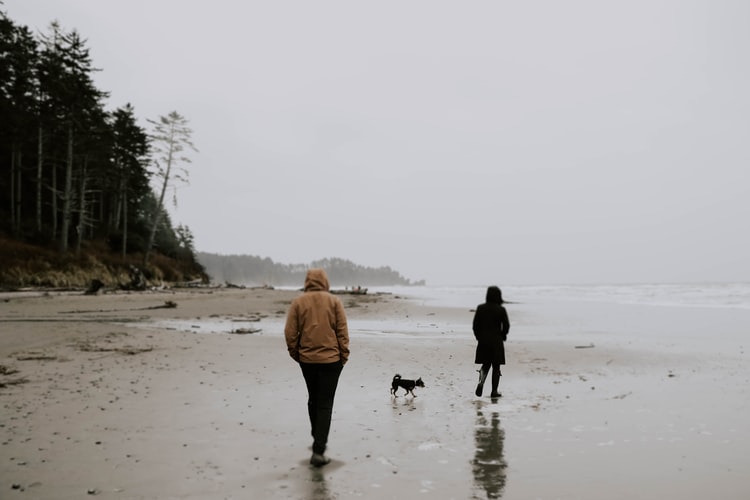
Nowadays, walking your dog is the most natural thing in the world. Yet this is something of the past decades, when the dog became our family friend.
Where does our outlet habit come from?
How often should you actually walk a dog?
And what rules apply for this?
In this article we will give you all the information about walking your four-legged friend.
Why walk your dog?
Walking your dog seems like an all-time habit. You will think. Doesn’t he just have to pee and defecate? And how else does he get enough exercise?
But many of our dogs were bred many years ago for some task in our society. No matter how early!
First we had wolves and wolfdogs to hunt with. Later we had canids as guards, keepers and even pack animals.
Enough to do, for the dog of the past! And peeing and pooping, they did that in between somewhere in a bush or corner. Nobody cared about that.
But today most of the dog’s tasks have been taken over by machines and other modern developments. This left only the luxury position of pet for our four-legged friend.
Now, of course, there are dogs with tasks. Think of guide dogs, police dogs and of course the house and yard guards. Yet these are also held differently than in the past.
Just walking out the door for a visit to the toilet or a round about is no longer possible in our busy, modern society. So we let our dogs out.
How often should you walk a dog?
We usually walk our dog so he can go to the bathroom and get plenty of physical exercise.
Nowadays we see that dogs are often taken out three times a day. Early in the morning, noon and late at night. This is on average every 6 to 8 hours.
But consider that you can only pee or defecate once every 8 hours. And only has a few minutes to do so.
Of course your dog will get used to a certain walking rhythm. But that does not have to mean that urinating once every 8 hours is enough.
Especially for dogs that are not allowed to pee in the garden, making a pee and poo round once every 4 to 6 hours is a nice habit.
Holding stools for a long time can cause health problems. From bladder stones to nasty infections.
How much exercise does my dog need?
In addition, every dog needs sufficient exercise for a good condition and health. However, this differs per breed.
For example, walking for an hour makes a Chihuahua completely tired, but a Border Collie is far from wanting to go home.
Therefore, read carefully about the specific breed needs and observe your dog.
Appropriate movement also has to do with the condition of the body. Is your dog sick , old, pregnant or is he still a puppy? Then of course other rules apply.
These individuals can take it easy, and at temperatures above 20 ° C . For polar dogs, a temperature limit of 15 ° C even applies!
The type of exercise must also suit your dog.
Does your dog have an increased risk of hip or elbow dysplasia ? Climbing stairs, slippery floors, wild games with sharp curves and hard stopping times are not recommended.
But walking or swimming is ideal for these dogs !
Where can you walk a dog?
Have you figured out what to do with your dog? Always keep to the rules of the environment.
In all municipalities in the Netherlands, the dog must be on a leash in built-up areas. There is only an exception to this when you enter an area with the official signs “dog play area” or “loose run area”.
Outside the built-up area, dogs are often allowed to run free, but always keep to the signs of the municipality.
Read the given information carefully. Sometimes running free is only allowed at specific times or during special months of the year.
An example of this is the beach. Here dogs are often allowed between October 1 and May 1 loosening freely .
However, between May 1 and October 1, the busier summer months start with many visitors. Then adjusted times apply for running free.
Dogs are not allowed at all in some areas. This is indicated by means of a prohibition sign.
Another special situation takes place in natural areas. To protect wildlife in nature, dogs often need to be on a leash here. Sometimes they are not even welcome at all.
When entering these areas, the four-legged friend must be kept under control by the owner at all times.
The game can be hunted and cause serious accidents. The breeding area of certain birds and shelters for animals such as foxes, badgers and rabbits can also be disturbed in such a way that this has a detrimental effect on the natural population.
Is your dog going after game after all? Or can you not prove that he is perfectly under appeal? Then it can be concluded that you are present in the nature reserve with an ‘unauthorized hunting tool’. This is punishable.
For this reason, it is always advised to keep wind and hunting dogs on a leash in a natural area, to avoid unpleasant situations.
-

 Apps1 year ago
Apps1 year agoWhy is Everyone Talking About Hindi Keyboards?
-

 Social Media1 year ago
Social Media1 year agoWho is Rouba Saadeh?
-

 Apps1 year ago
Apps1 year agoThings you need to know about Marathi keyboard today
-

 Apps1 year ago
Apps1 year agoStuck with Your default Bangla keyboard? Isn’t it time for a change?
-

 Social Media1 year ago
Social Media1 year agoMati Marroni Instagram Wiki (Model’s Age, Net Worth, Body Measurements, Marriage)
-

 Entertainment1 year ago
Entertainment1 year ago12 Online Streaming Sites that Serve as Best Alternatives to CouchTuner
-
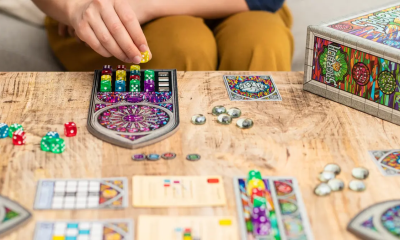
 Games11 months ago
Games11 months agoTop 7 Popular Puzzle and Card Games for Relaxing Your Brain on Mobile, Featuring Solitaire
-

 Entertainment1 year ago
Entertainment1 year agoMovierulz Website: Movierulzz 2021 Latest Movies on Movierulz.com
